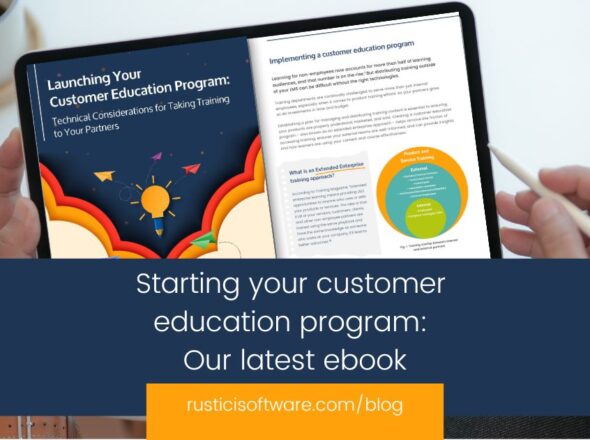We’re nearing completion of a SCORM Driver implementation with a new customer (Honeytech) and have had reason to discuss with them one of our newer products, the SCORM Cloud. If you follow this blog, you’ve likely seen mention of the product here before. Frankly, for some, the SCORM Cloud is a confusing proposition. It’s not like an LMS, per se, it’s a piece of an LMS. As we work on offering this product to the market, we’re struggling with exactly how to convey its capabilities. (Just today, Susan and I discussed, without conclusion, topics like Software as a Service, Platform as a Service, Software Service, Service Service, etc…)
It’s enlightening, then, when one of your customers gets it. Dan and Lance (from the customer) were discussing the SCORM Cloud via email, while I watched from the “CC” box. And Dan nailed it…
Think of a traditional LMS like a university. You have a campus, classes, students, and teachers. The LMS equivalent is:
Campus = website
class = course material
student = user
teacher = (optional in LMS)In a real school a teacher will have some kind of grading system that says if you pass or fail, they will take attendance, create some record of how well you did and what you did. That “grading” is what SCORM does. There are a lot of websites out there (campuses) and a lot of classes (course material). SCORM is an agreed upon standard on how that material is tracked and recorded. So, I could take the courses we created and “plug them into” a SCORM compliant LMS. However, not all LMSs will do a great job implementing SCORM. In fact some are terrible.
So, I believe the service Tim is offering is only the SCORM part. So, we can build the campus, create the courses, and get the students however we want. We can choose to integrate with an existing LMS, create our own way of managing content and users, etc but we off load the actual tracking to the SCORM cloud. If we find an LMS that fits how we want to register users and display material but has terrible SCORM tracking capabilities… no problem. Just send it to the Cloud.
So, if I understand correctly they don’t manage users, course materials, or even a public website. They just get data behind the scenes, process and store it, and send it back.
Note to self: Find smart customers, offer them products that solve a challenging problem, and get out of their way.


